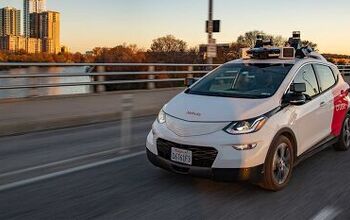Toyota's Futuristic Concept-i is the Best Friend You'll Never Have

Yesterday at the Consumer Electronics Show, Toyota debuted its Concept-i — an adorable and attentive little cutie pie of a self-driving car.
While it’s too impressive to make it to production anytime remotely soon — especially since Toyota recently disavowed impending autonomy — it’s sweet to see a company embracing fun as a central design concept. It’s a major departure from the super-serious, steering-wheel-absent “driving solutions” hypothesized by other manufacturers. The Concept-i works with drivers, keeping traditional driving controls and offering a “chauffeur mode” when you’re not interested in using them.
The happy little concept makes use of “ Yui,” Toyota’s artificial intelligence system that learns with the driver to build a relationship that feels meaningful and human. The AI monitors driver behavior and mood to determine some the vehicle’s actions while interacting with the driver. Toyota claims that, in manual mode, the system is non-invasive but can offer driving support if it suddenly notices an operator needs help.
Yui, which also monitors a driver’s emotional state, occupies a visual space primarily in the central console, though it can “move” around inside the car and appear on other screens when there’s less of a need to focus on what lies ahead.
Styling is almost classically futuristic — wedge shape, abundance of glass, and scissor doors. It also makes use of loads of exterior lighting so that you, or Yui, can better communicate with other motorists. Yui appears on exterior door panels to greet the driver and any passengers as they approach the vehicle. The rear of the vehicle can issue messages to communicate about upcoming turns or warn motorists about a potential hazard. Foul language and pointed insults are likely not part of its vocabulary.
“At Toyota, we recognize that the important question isn’t whether future vehicles will be equipped with automated or connected technologies,” said Bob Carter, senior vice president of automotive operations at Toyota. “It is the experience of the people who engage with those vehicles. Thanks to Concept-i and the power of artificial intelligence, we think the future is a vehicle that can engage with people in return.”
Toyota might not be the company I expected to focus on a future of driving engagement, but with so many others interested only in “driverless mobility,” it’s a welcome addition to a very short list.
[Images: Toyota]

A staunch consumer advocate tracking industry trends and regulation. Before joining TTAC, Matt spent a decade working for marketing and research firms based in NYC. Clients included several of the world’s largest automakers, global tire brands, and aftermarket part suppliers. Dissatisfied with the corporate world and resentful of having to wear suits everyday, he pivoted to writing about cars. Since then, that man has become an ardent supporter of the right-to-repair movement, been interviewed on the auto industry by national radio broadcasts, driven more rental cars than anyone ever should, participated in amateur rallying events, and received the requisite minimum training as sanctioned by the SCCA. Handy with a wrench, Matt grew up surrounded by Detroit auto workers and managed to get a pizza delivery job before he was legally eligible. He later found himself driving box trucks through Manhattan, guaranteeing future sympathy for actual truckers. He continues to conduct research pertaining to the automotive sector as an independent contractor and has since moved back to his native Michigan, closer to where the cars are born. A contrarian, Matt claims to prefer understeer — stating that front and all-wheel drive vehicles cater best to his driving style.
More by Matt Posky
Latest Car Reviews
Read moreLatest Product Reviews
Read moreRecent Comments
- ToolGuy TG likes price reductions.
- ToolGuy I could go for a Mustang with a Subaru powertrain. (Maybe some additional ground clearance.)
- ToolGuy Does Tim Healey care about TTAC? 😉
- ToolGuy I am slashing my food budget by 1%.
- ToolGuy TG grows skeptical about his government protecting him from bad decisions.



































Comments
Join the conversation
It looks like something you'd see in the movie "Sleeper", with Woody Allen.
One thing I've always found interesting is the non real world length of the "fender skirts" on these kind of vehicles. The carbon fiber/plastic/whatever would get torn up rather quickly if driven on real world streets and roadways.